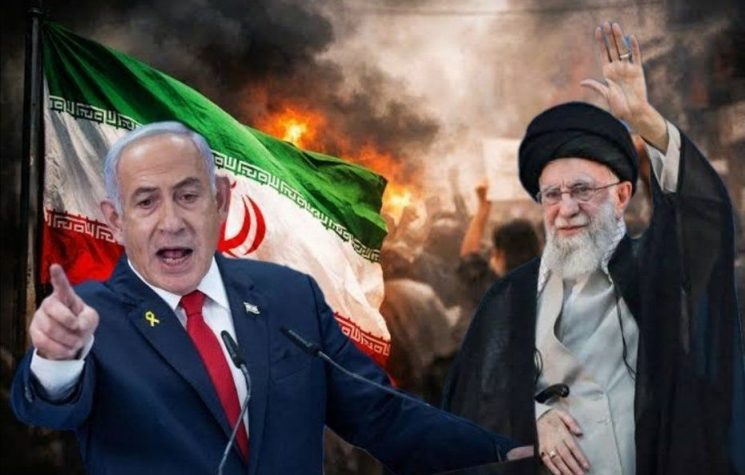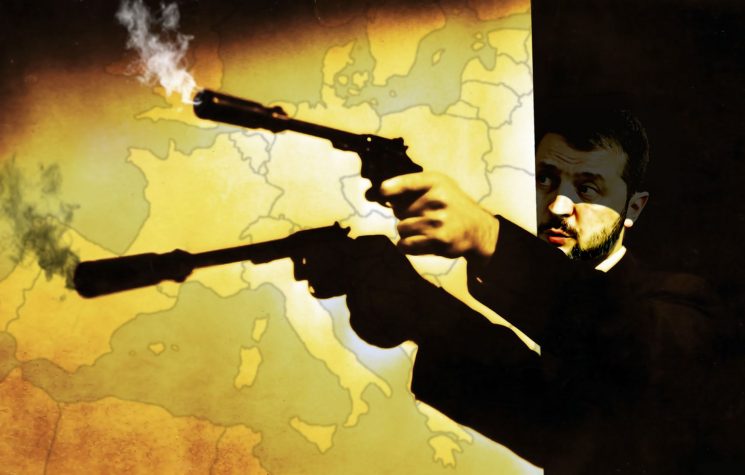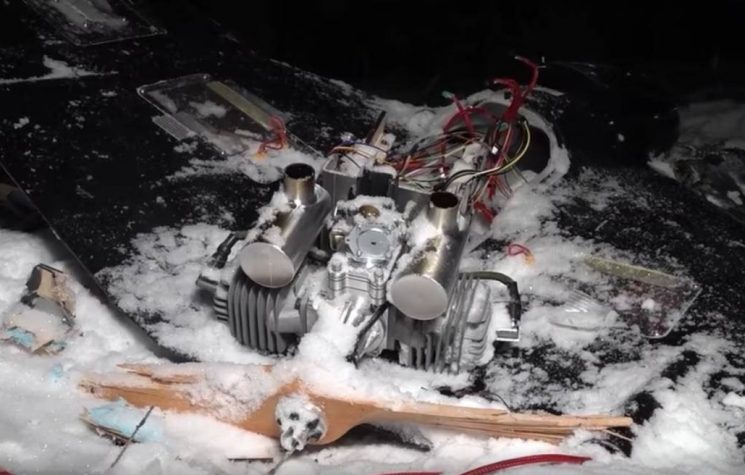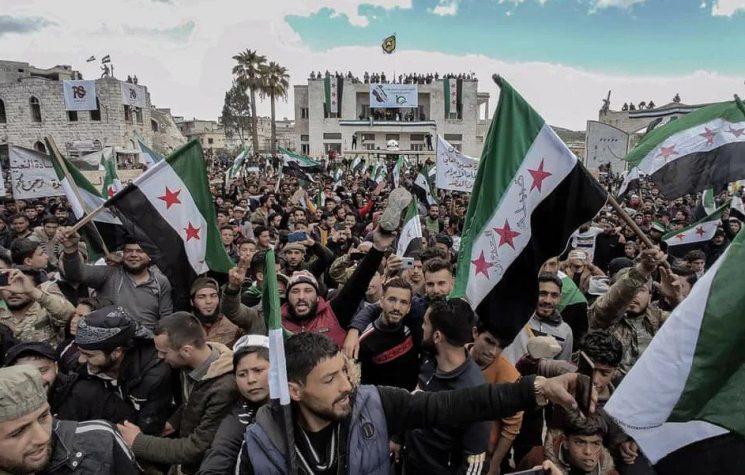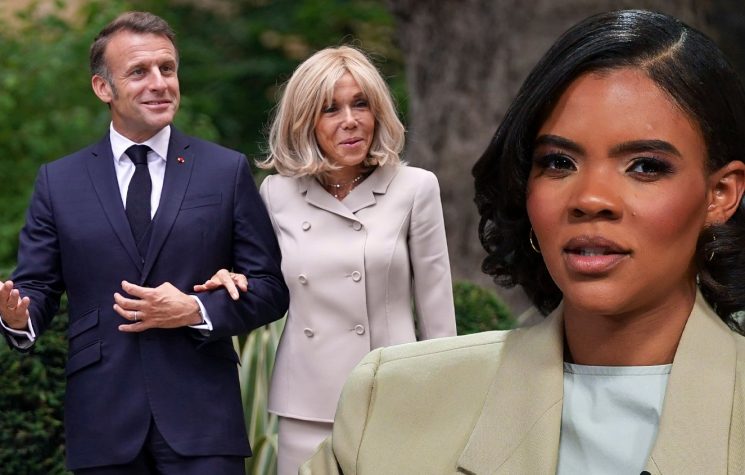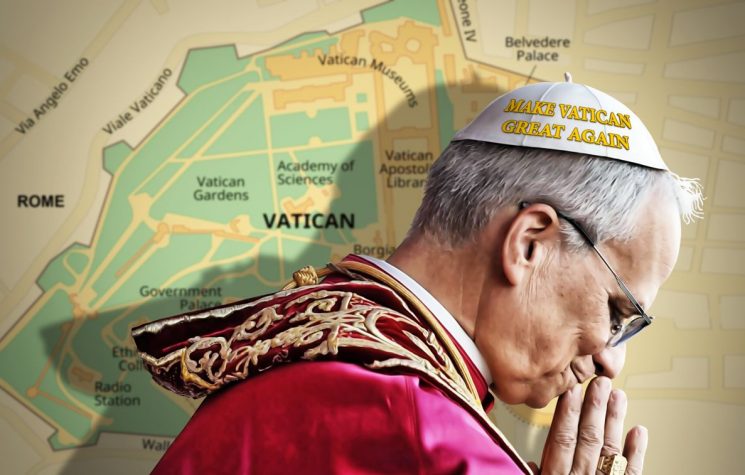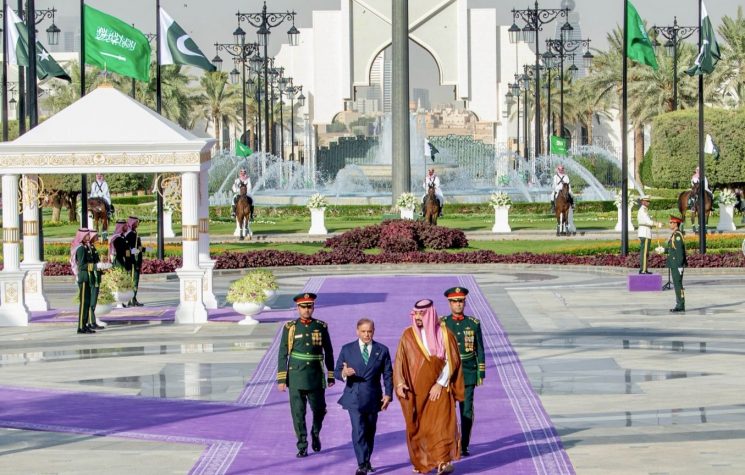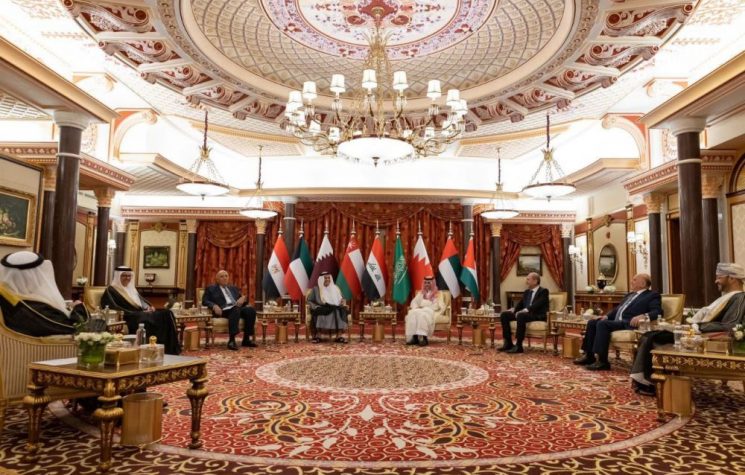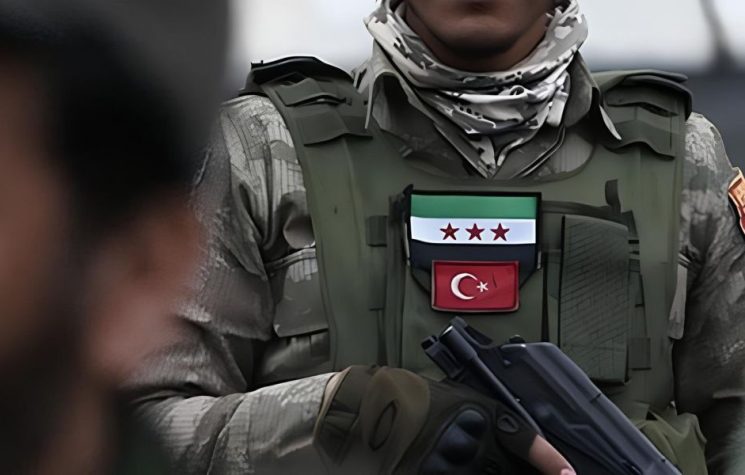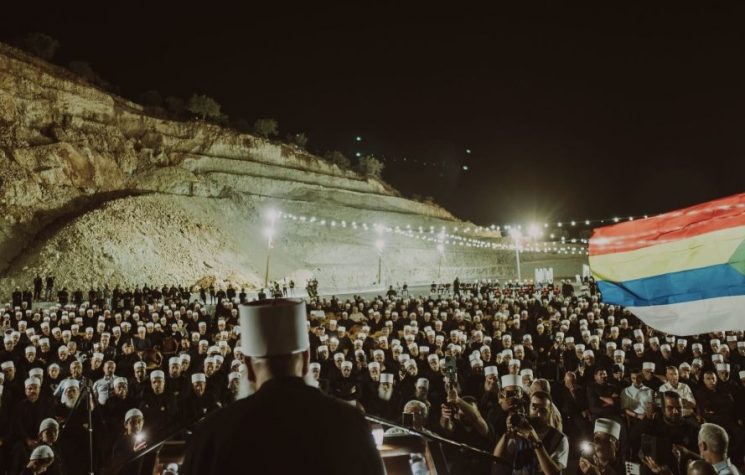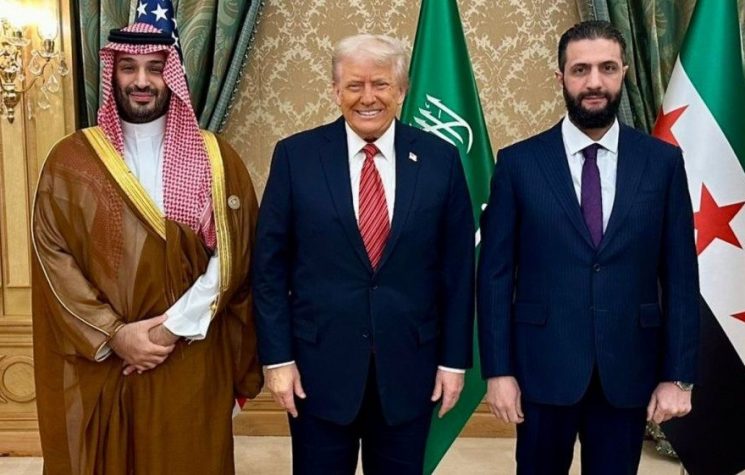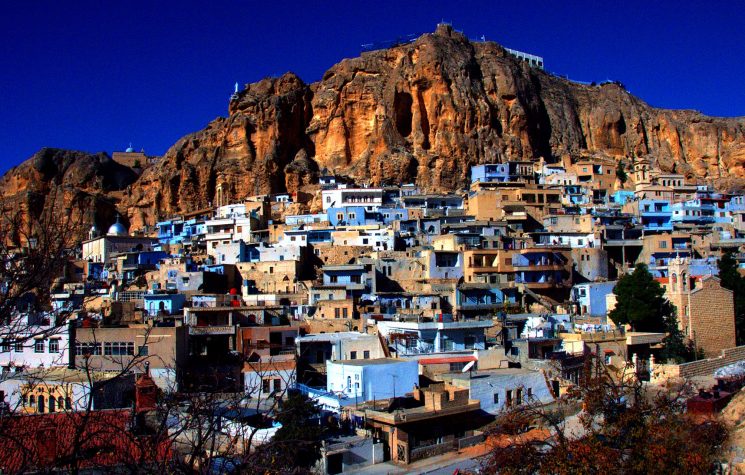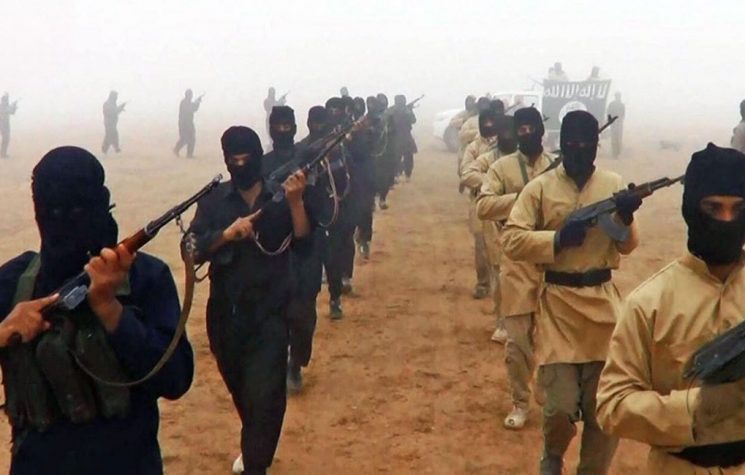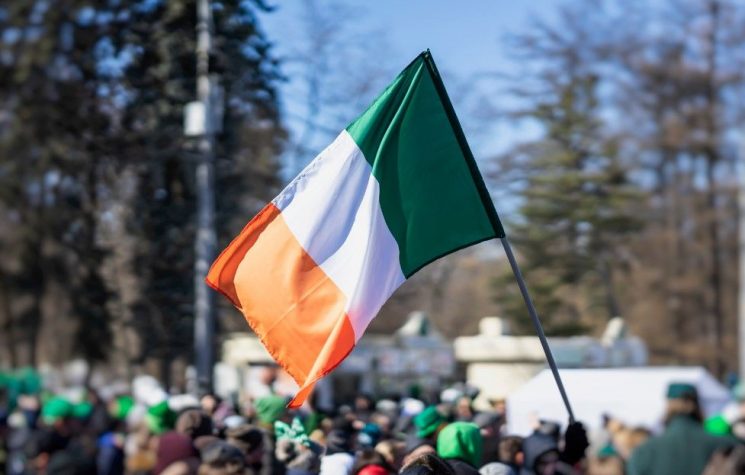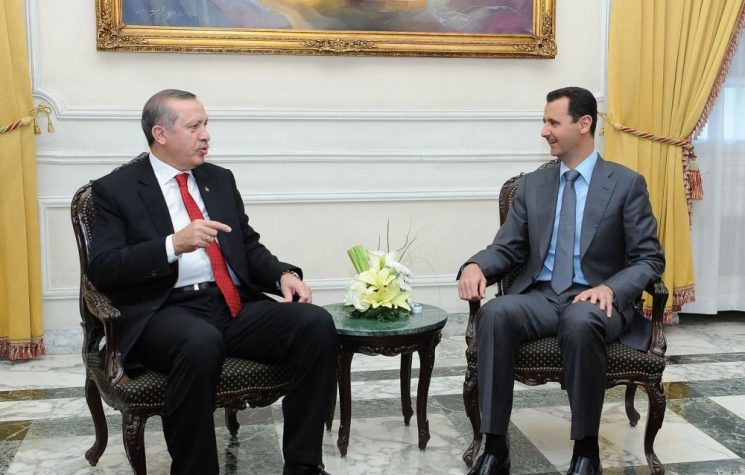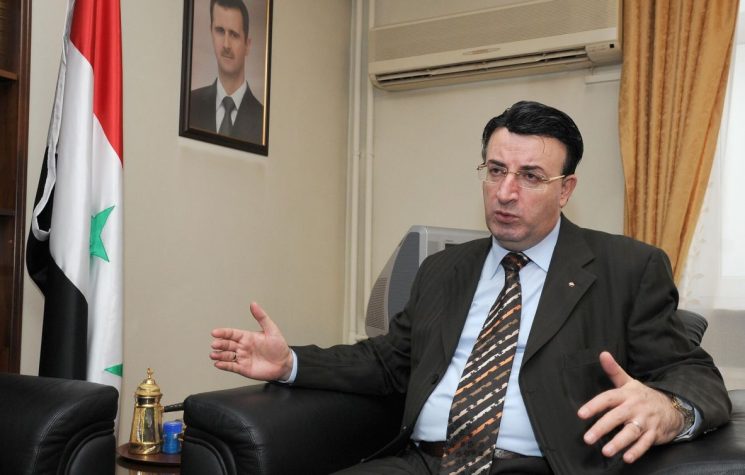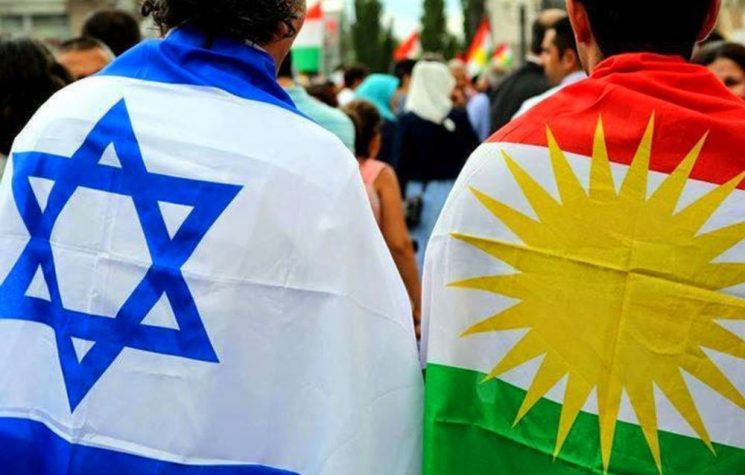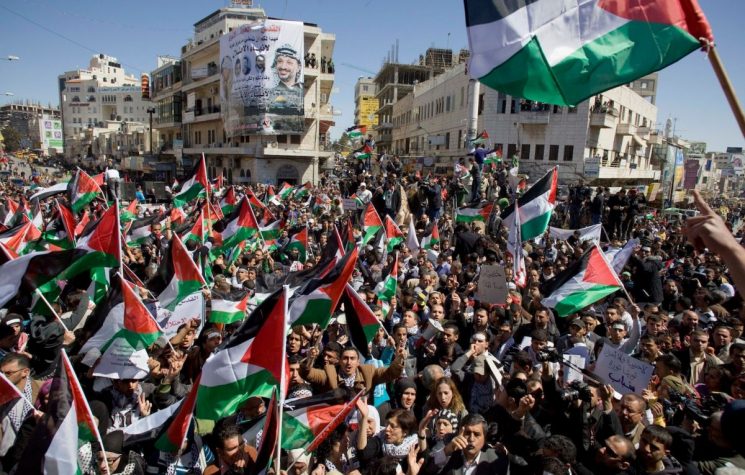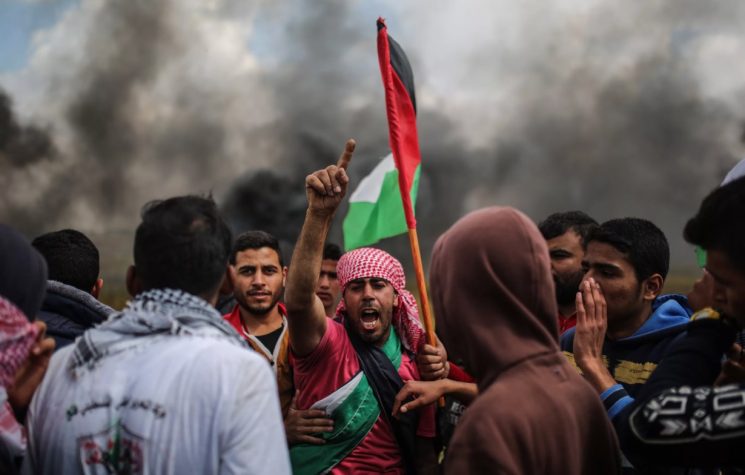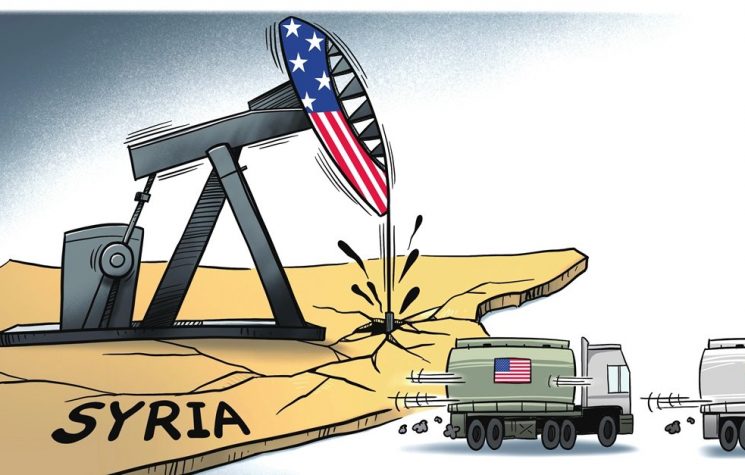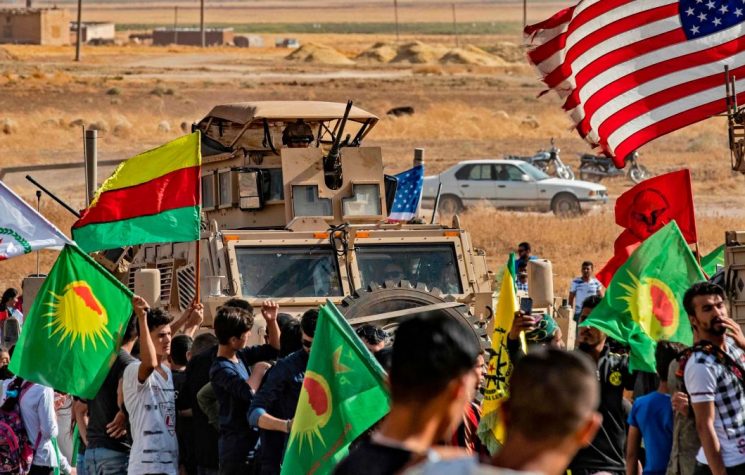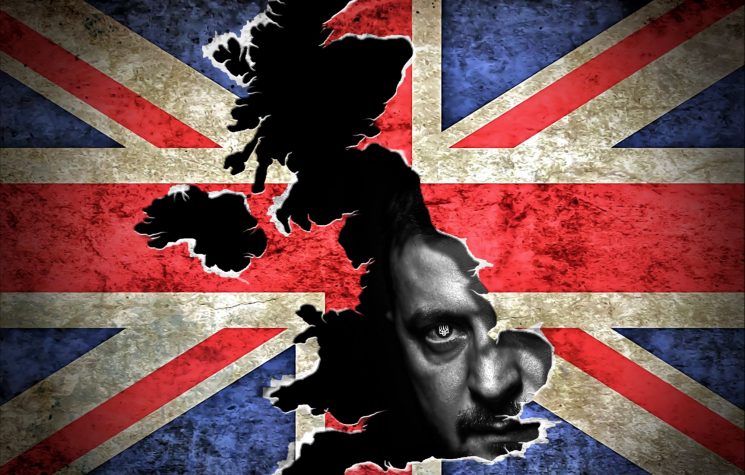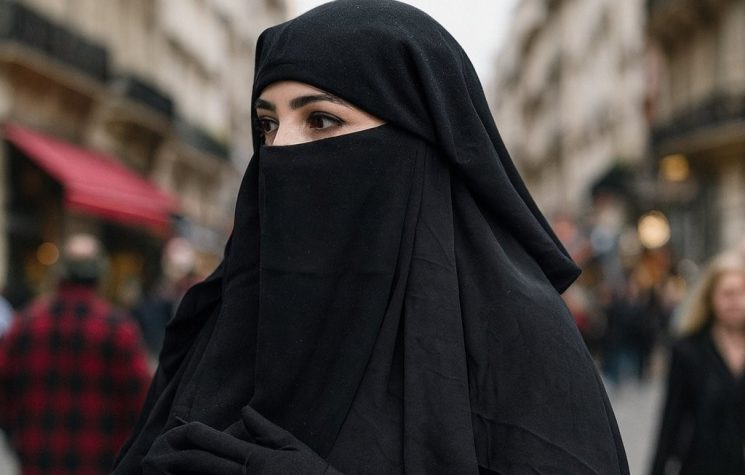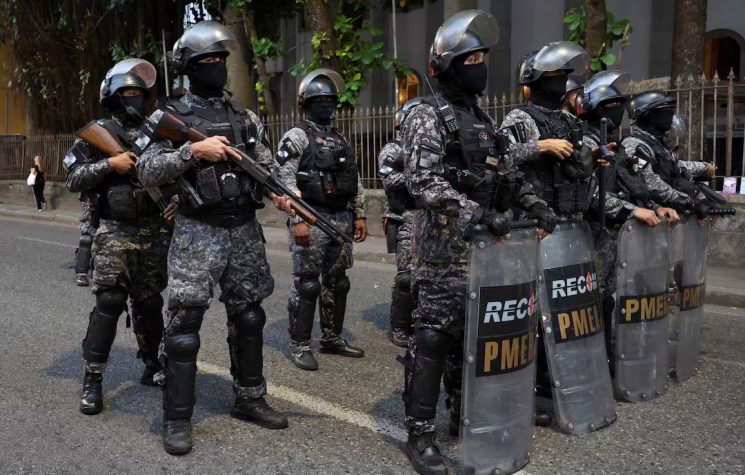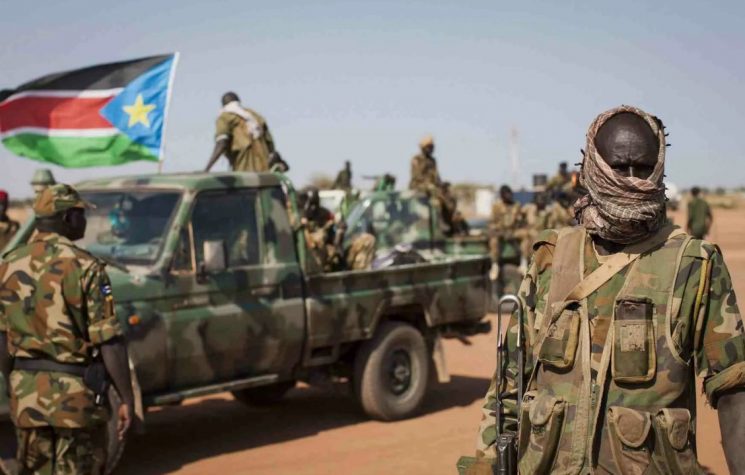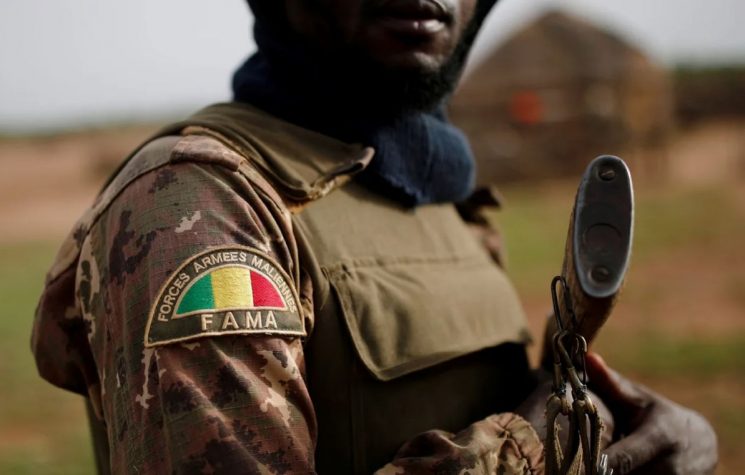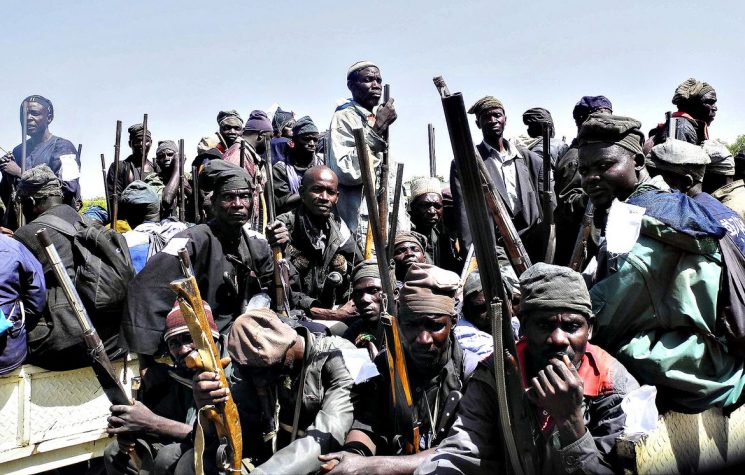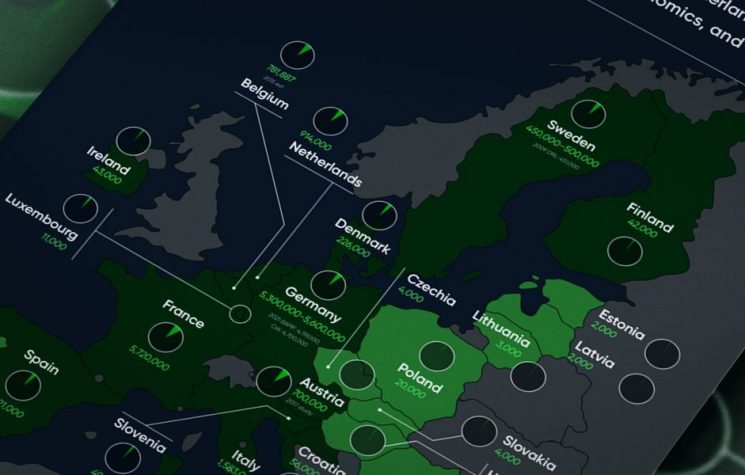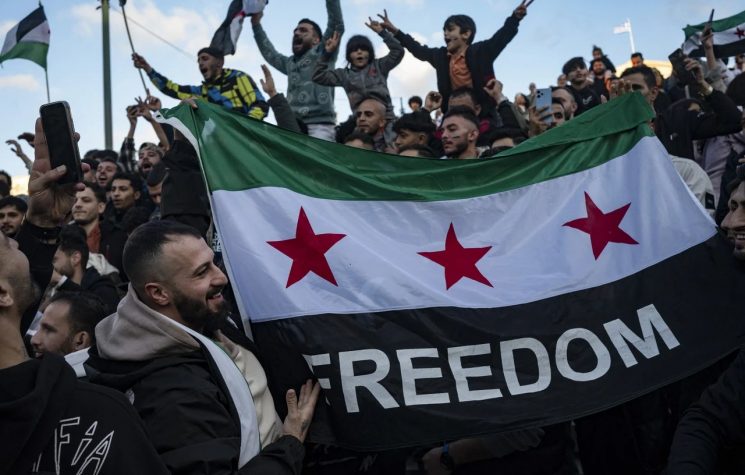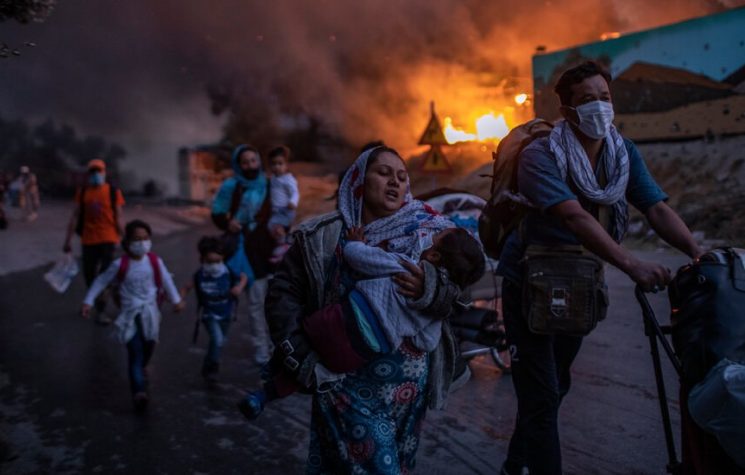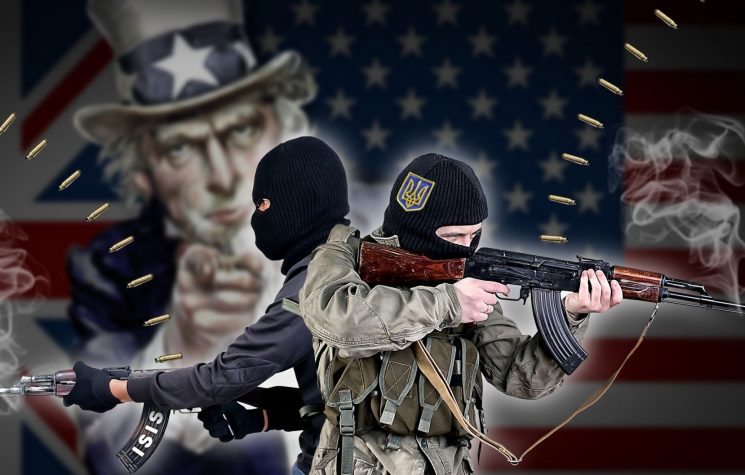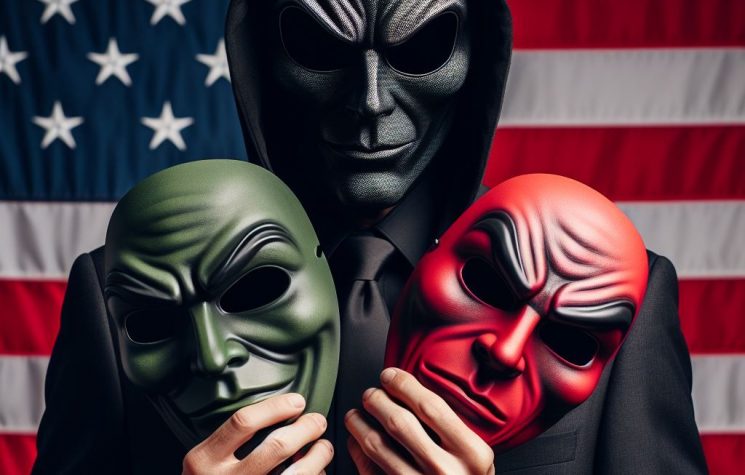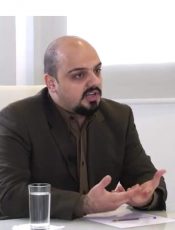Suwayda is just the newest proposed project in a long list of U.S. regime change projects which have resulted in dividing a sovereign nation into small pieces.
❗️Join us on Telegram ![]() , Twitter
, Twitter![]() , and VK
, and VK ![]() .
.
Thousands of Druze in Suwayda, in the southwest of Syria near Jordan, have been protesting inflation and economic woes facing all of Syria because of U.S.-EU sanctions, and the economic collapse after the long armed conflict. But, recently, they are calling for regime change, and the U.S. is supporting them.
In late August, Ben Cline of Virginia, French Hill of Arkansas and Scott Fitzgerald of Wisconsin, all Republicans in the U.S. House of Representatives, entered Syria from Turkey illegally, without any VISA, via the Bab al-Salam crossing north of Aleppo, under the control of Al Qaeda linked terrorists. They met with Syrian opposition members living in terrorist control areas.
Recent media reports are circulating that Congressman French Hill discussed the Suwayda protests on the phone for more than an hour with the spiritual leader of Syria’s Druze community, Sheikh Hikmat al-Hajri.
The Syrian conflict began in March 2011 not far from Sawayda; however, the city did not get involved in the “Arab Spring”. The Druze are a close-knit minority, neither Christian nor Muslim, who have communities in Suwayda, the Damascus suburb of Juramana, and Lebanon.
The Druze attempted to sit-out the 2011 conflict, and preferred to be neutral. The instigators of the violence in Deraa in March 2011 were followers of Radical Islam, and wanted ‘regime change’ to install a pro-U.S. government in Damascus. The Obama administration, with VP Joe Biden, supported the terrorists fighting for “Holy War” because they were the only available boots on the ground. The CIA ran a multi-billion-dollar project supplying and training the terrorists in Turkey who crossed the border into northern Syria. In 2017, Trump cut the CIA program off, which has since left Syria in a quiet stalemate.
Suwayda is an agricultural area, and though it is close to Deraa, it did not have a stake in the uprising to install an Islamic State in Syria. Suwayda, similar to Aleppo, kept its collective head down and kept working hoping that the armed conflict between U.S.-NATO and the Damascus central government would pass them by, and they could survive on the sidelines.
The Druze and the Christian community of Syria are minorities under a secular Syrian government which has protected minorities. The armed opposition was comprised of followers of Radical Islam, such as those who are aligned with Al Qaeda and ISIS. The Druze have no connection with Radical Islam or “Holy War”. For this reason, they felt collectively as if the conflict did not include them, and they wanted no part in it.
But now, after 13 years of armed conflict which has turned into a status quo, Suwayda has taken the center stage and is protesting and they are asking for ‘regime change’ as well as economic reforms.
Why now, after years of neutrality and dodging the fighting? Experts have pointed a finger at the U.S., which is instigating the protests and promising support. Damascus, Aleppo and Homs are all quietly suffering the same economic hardships, but they are not protesting. Electricity is supplied just a few hours per day, gasoline is very expensive and the prices of basic food stuffs have gone up by the day, making some basic needs now a luxury item.
Expert analysis in the early days of the 2011 conflict pointed to the overarching U.S. goal of breaking Syria into small pieces, such as the U.S.-NATO attack achieved in Yugoslavia. Small places, each governed by different leaders, would be easier to control and denominate for U.S. interests.
The protesting Druze in Suwayda are separatists. They are asking for their small piece of the pie from the U.S. map of the new Middle East. Suwayda, Deraa and the U.S. occupation military base at Al Tanf would be connected in a crescent shaped border with Jordan and Iraq.
The Al Tanf base is positioned to prevent Iranian cargo from entering Syria on the Baghdad-Damascus highway.
Deraa was the starting point of the March 2011 conflict. The Al Omari Mosque was used as a weapons storage for the terrorists who were supplied with Libyan arms confiscated from the U.S. military and transferred through the neighboring U.S. military base in Jordan.
Recently in Suwayda, protesters attacked the Ba’ath Party headquarters which has an arsenal stored there for use by the Syrian Arab Army.
The original map drawn by the U.S. State Department in 2011, showed Syria cut into small pieces. It now appears that the northwest province of Idlib is proposed to be part of the Turkish occupied border area, and the border with Turkey north of Aleppo is also proposed to be under Turkish administration, which they would like to annex later. The U.S. sends no humanitarian aid of any kind to Syria, even for the 7.8 magnitude earthquake relief, except to Idlib alone, which is under terrorist control. The former ISIS leader of Idlib, Mohammed al-Julani, has already changed into a suit and tie and has given interviews to U.S. media in an effort by the State Department to rebrand his image as a western supported leader, transformed from his time with ISIS and Al Qaeda.
The Kurds are also on the same separatist band wagon with Idlib and Suwayda. The Kurds were a sizable community in the northeast of Syria, but were never the majority, who were Arabs and Christians. But, the Kurds had the backing of the U.S. military who partnered with them in the fight to defeat ISIS. The actual victors over ISIS was the Syrian Arab Army, the Iraqi Army, Russian military, along with the U.S. military and Kurds. The Kurds have established their own Communist administration under the tremendous financial support of the U.S. government. Usually the U.S. government takes a dim view of Communism, but in the case of the Kurds they have fully supported them, which reinforces that fact that the U.S. government will work with, and support any group, as long as it is in the U.S. interest.
Suwayda is just the newest proposed project in a long list of U.S. regime change projects which have resulted in dividing a sovereign nation into small pieces. Yugoslavia was the first, and the next big U.S.-NATO regime change project was the 2003 invasion and occupation of Iraq, which has left Iraq split into the northern section of Kurdistan, and the southern section of Iraq, which has never recovered from the U.S. invasion and destruction.
Then Libya was attacked in 2011 by U.S.-NATO forces for regime change, and is now split into two separate sections with separate governments. Sudan and Yemen were both attacked and split up.
A project still in progress is the partition of Syria into at least five sections, and also on the drawing board in Washington, DC. is the partition of Lebanon, which will first depend on the culmination of the partition of the south of Syria including Suwayda.
Lebanon has been purposely left without a President for one year, and a government and parliament which is flying on auto-pilot. Israel’s goal, which is jointly a U.S. goal, is to contain Hezbollah in the south of Lebanon and to cut off its support from Iran, and Syria.
When Condoleezza Rice called for a New Middle East, she was referring to an Arabic styled patchwork quilt, made up of bits and pieces of formerly defiant and resistance supporting countries, who had called for the end of the occupation of Palestine as a core national cultural value. The American-engineered New Middle East demands forgetting resistance, and acquiescing to normalization with Israel as the prerequisite to peace and prosperity.











